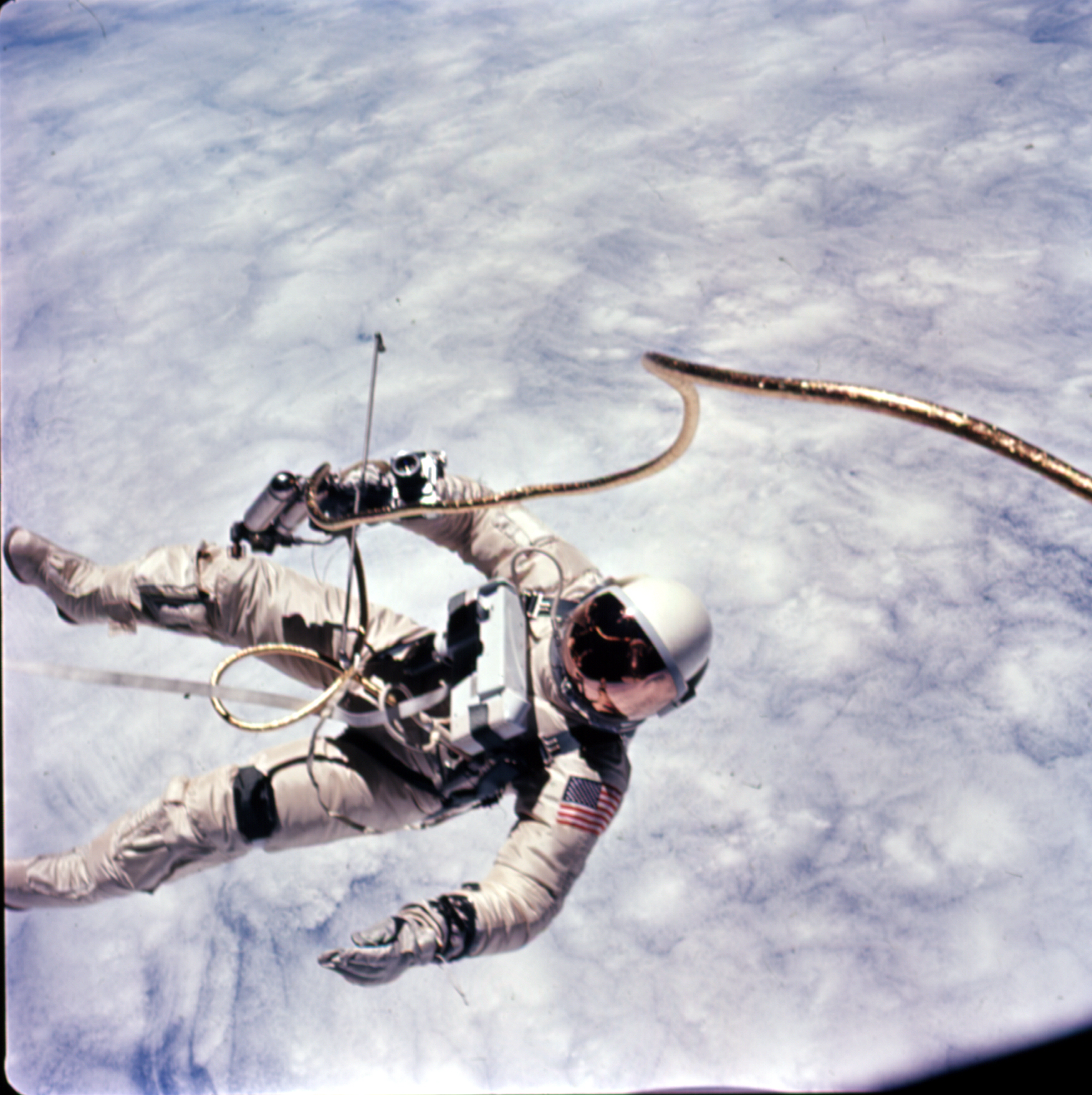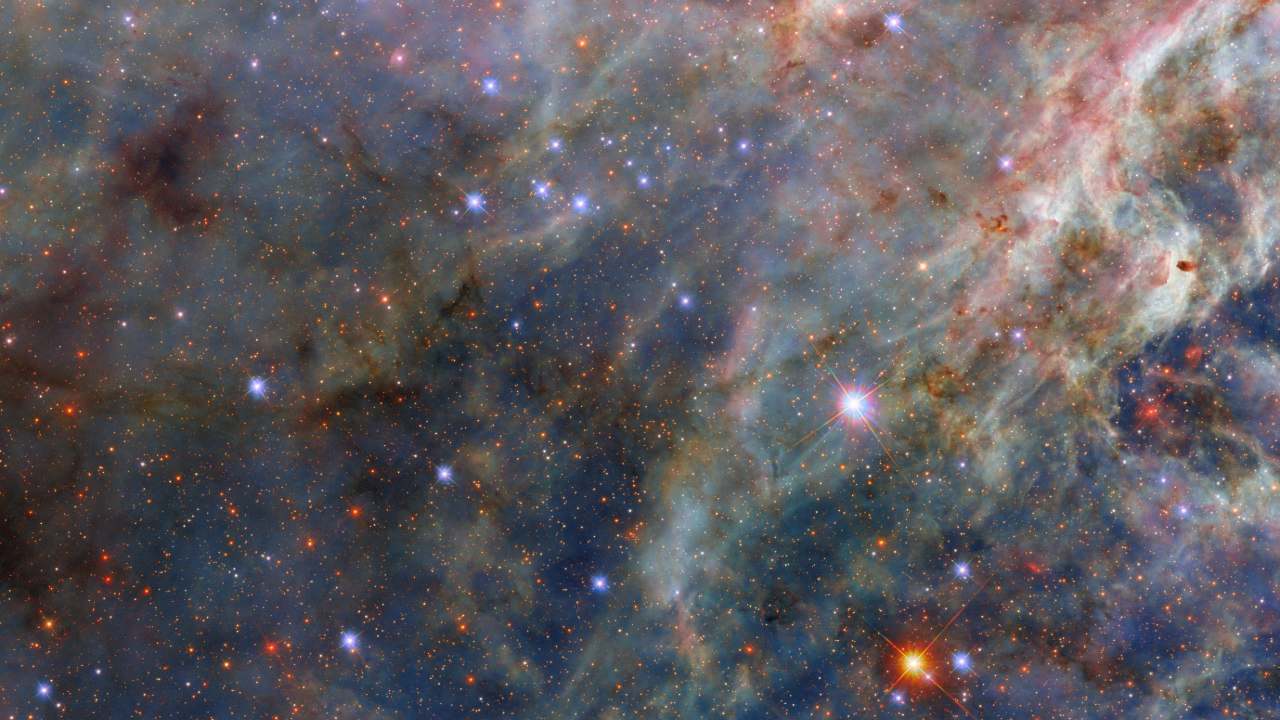Risky Business: At Mars Conference, Experts Discuss Threats to Space Travelers

Space will never be a risk-free environment, but there are ways to reduce the risk for crew who travel on future deep-space missions, experts noted at the Human to Mars Summit in Washington, D.C., yesterday (May 9).
For example, NASA could help to prepare crewmembers for the challenges they might face on longer missions by first doing missions closer to home, according to the experts on the panel, which was moderated by Space.com columnist Leonard David.
Indeed, NASA is already using the International Space Station (ISS) as an environment for learning how to reduce the risks associated with a potential human mission to Mars, John Grunsfeld, associate administrator for NASA's Science Mission Directorate and a former astronaut, said during the discussion. However, people outside the spaceflight industry often don't associate the station with human voyages to Mars, he added. [Mars Radiation Threat to Astronauts Explained (Infographic)]
Grunsfeld added that astronauts typically stay on the orbiting complex for six months, and one experiment included a nearly yearlong mission with NASA astronaut Scott Kelly and Russian cosmonaut Mikhail Kornienko. These missions mimic the transit time of a future human mission from Earth to Mars, which current estimates suggest will take between six and eight months. During that time, crewmembers will need to remain healthy, entertained and physically fit enough to be productive on the Martian surface immediately after arrival, he said. (Because astronauts lose muscle and bone mass while in space, they may not be ready to start manual labor immediately after landing.)
"At the end of the [ISS] mission, you descend to a planetary surface that is Earth," Grunsfeld said during the panel, which was livestreamed. For now, NASA does not ask astronauts who have just returned to Earth from the ISS to do the types of activities they might have to perform upon arriving on the Martian surface. (In fact, returning astronauts don't even walk right away; they are carried away from the returned space capsule on stretchers as a precaution with the anticipated loss of muscle and bone.) But having those astronauts perform physical tasks immediately upon landing could be an option if the agency wants to have a more realistic simulation of a Mars mission.
NASA also attempts to mitigate risks for crewmembers by staging mock missions, in which aspects of space exploration are simulated in caves, underwater or at facilities such as The Mars Society's Mars Desert Research Station in Utah, Penny Boston, director of the NASA Astrobiology Institute, said during the panel discussion.
"Most people who engage in [NASA-related] exploration and risk taking … are not daredevils," Boston said. "We want people who are really very cool. They don't do it for the thrill, but also they are usually pretty fearless. When you are fearless, you can keep your wits about you."
Breaking space news, the latest updates on rocket launches, skywatching events and more!
Calculating risk
NASA got better at calculating risk in the wake of two shuttle disasters: the Challenger explosion during takeoff in 1986, and the Columbia breakup during landing in 2003, Grunsfeld said.
Grunsfeld — a five-time shuttle astronaut who also helped perform the last Hubble Space Telescope repair mission in 2009 — said that for the Hubble mission, he initially received odds of 1 in 70 of not returning to Earth. Then, a Chinese anti-satellite test in 2007 scattered pieces of a destroyed satellite in low Earth orbit, bringing the odds down to 1 in 65. (Because the space shuttles traveled at more than 17,000 mph, or about 27,000 km/h, a collision with even a small piece of space debris could seriously damage the craft and put the astronauts' lives at risk.)
"Those sound like pretty terrible odds," Grunsfeld said. "Space station missions are a little higher [probability of returning] because you have some place to go." His Hubble repair mission, however, was in a different orbit and could not reach the ISS in case of emergency.
For Grunsfeld, the risk was worth the potential reward. An astrophysicist, Grunsfeld was determined to advance science, he said, and the chance for him to repair and upgrade the Hubble telescope was enough incentive for him to go. (The data from Hubble has contributed to Nobel Prize-winning science.) However, Grunsfeld said that if he had received a 1-in-65 chance of not returning from a routine shuttle mission to the ISS to deliver food and water, he would have turned it down.
The panelists mentioned many types of risk, ranging from programmatic to personal to professional. Tiffany Montague, a former manager of Google Space Projects, said it's important not to view risk as negative.
"In Silicon Valley, you're sort of free of that [negative perception]," she said. "You're very tolerant of risk. You're not just tolerant of it; you celebrate it. You look at it as an opportunity."
"Silicon Valley tells you that failure is an option," she added. "It's a great option. You should do it fast. You should do it often. Risk is a tool for growth and innovation."
The limits of risk
While some may look to new technologies to better manage risk, Rick Davis, NASA's assistant director for science and exploration, said he was schooled in this line of thinking during a three-and-a-half-year assignment to work with the Russian space agency, Roscosmos.
"When you go there, what you see is them using technology that literally, maybe, [cosmonaut] Yuri Gagarin used [in the 1960s]," he said, adding that some people might be inclined to think, "Oh my God; that's backwards." But using the same technology for 50 years is not only cheaper (in some cases) but also demonstrates a robustness of technologies that have been tested in spaceflight that the U.S. space program could learn from, he said.
NASA has learned quite a bit about space travel since the 1960s, of course, but there are still some wrinkles to be worked out. A big one, Davis said, is logistics. The ISS depends on regular cargo shipments of food, water and supplies — an arrangement that would be impractical for a Mars mission. (Journeys to Mars would take six to eight months, according to current estimates, and launches must occur when Earth and Mars align favorably, which happens only about every 18 months.)
But when it comes to risk, Davis said, "It's the stuff you don't know, that you haven't attempted, that worries me most."
Follow Elizabeth Howell @howellspace, or Space.com @Spacedotcom. We're also on Facebook and Google+. Original article on Space.com.

Elizabeth Howell (she/her), Ph.D., was a staff writer in the spaceflight channel between 2022 and 2024 specializing in Canadian space news. She was contributing writer for Space.com for 10 years from 2012 to 2024. Elizabeth's reporting includes multiple exclusives with the White House, leading world coverage about a lost-and-found space tomato on the International Space Station, witnessing five human spaceflight launches on two continents, flying parabolic, working inside a spacesuit, and participating in a simulated Mars mission. Her latest book, "Why Am I Taller?" (ECW Press, 2022) is co-written with astronaut Dave Williams.
